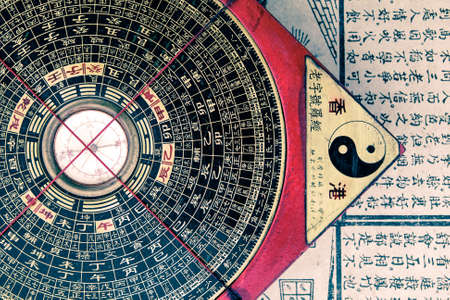Introduction to Aura Colours
Across the United Kingdom, interest in holistic health and complementary therapies has grown steadily over recent decades. Central to many of these practices is the concept of the human aura—a subtle energy field believed to surround every individual. The aura is often described as comprising various colours, each representing different emotional states, physical health indicators, or personality traits. In UK culture, while mainstream science may approach the subject with scepticism, there is an increasing openness among communities exploring wellbeing beyond conventional medicine.
The significance of aura colours in the UK is shaped by a blend of spiritual traditions, ranging from Celtic folklore to modern energy healing modalities. Many Britons who engage with complementary therapies view aura readings as a tool for self-discovery and personal growth. The interpretation of these colours can vary, but commonly accepted associations include blue for calmness, green for healing, and red for vitality. Practitioners across Britain integrate these ideas into their sessions, using aura perception as part of holistic assessments and healing plans.
This overview sets the stage for a deeper exploration of how aura colours intersect with UK beliefs about energy fields, shaping both personal wellness journeys and broader cultural conversations around complementary healthcare.
Historical and Cultural Context of Healing Practices in the UK
The United Kingdom has a rich and varied history when it comes to healing practices, ranging from ancient folk remedies to the modern embrace of complementary and alternative therapies. Understanding this historical landscape is essential for appreciating how aura colours and energy-based healing have found their place within British culture.
Roots in Folk and Traditional Medicine
Long before formal healthcare systems, communities across England, Scotland, Wales, and Northern Ireland relied on local healers, herbalists, and wise women. These individuals often employed plant-based remedies, rituals, and an intuitive understanding of the bodys energies—concepts that echo today in many complementary therapies. Folk healing was deeply intertwined with beliefs about the land, seasons, and spiritual wellbeing, reflecting a holistic approach that resonates with contemporary ideas about auras and energy fields.
Influence of Global Traditions
From the 19th century onwards, increased travel and communication brought a wider array of healing philosophies to the UK. Practices such as yoga, reiki, and acupuncture—each with their own interpretations of energetic balance—began to influence British approaches to health. Over time, these global traditions merged with local customs, enriching the palette of available therapies.
Timeline of Key Developments in UK Healing Practices
| Era | Main Healing Approaches | Cultural Influence |
|---|---|---|
| Pre-1800s | Folk medicine, herbalism, ritual healing | Local traditions and spiritual beliefs |
| 1800s–Early 1900s | Homeopathy, mesmerism, early osteopathy | European scientific movements; Victorian curiosity |
| Mid-20th Century | Naturopathy, chiropractic care, spiritual healing | American influences; rise of self-help culture |
| Late 20th Century–Present | Aura reading, reiki, crystal therapy | Globalisation; integration of Eastern philosophies |
The Modern Landscape: Integration and Regulation
Today in the UK, complementary therapies are widely accessible alongside conventional medicine. Organisations such as The Complementary and Natural Healthcare Council (CNHC) help set professional standards for practitioners. While some therapies focus on physical manipulation or herbal support, those involving aura colours—such as reiki or aura photography—address the subtler aspects of human health by working with perceived energy fields.
The Enduring Role of Energy in British Healing Traditions
The idea that health involves more than just the physical body persists across centuries of British healing practice. Whether through ancient folk rituals or modern aura-based therapies, there remains a consistent thread: a belief in the importance of balance between mind, body, spirit—and for many today—the colours and qualities of the aura itself.

3. Popular Aura and Energy Healing Modalities in the UK
The United Kingdom has witnessed a significant rise in interest around aura reading and energy healing, with a range of complementary therapies now widely practised. These modalities, while diverse in their approaches, share a common aim: to restore balance and wellbeing by working with the bodys subtle energies. Below, we explore some of the most prominent energy-based treatments currently available across the UK.
Reiki: The Japanese Technique Embraced by Britons
Reiki stands as one of the best-known energy healing practices in the UK. Originating from Japan, Reiki involves practitioners channelling universal energy through their hands to the recipient, either via gentle touch or by hovering above the body. Many British practitioners incorporate traditional Usui Reiki techniques, while also adapting sessions to suit local preferences for privacy and comfort. Reports from clients often include feelings of deep relaxation, clarity, and emotional release following a session.
Crystal Healing: Harnessing the Power of Gemstones
Another modality that has found considerable popularity in Britain is crystal healing. This practice involves placing specific crystals on or around the body with the intention of influencing the aura’s colour and vibrational state. Healers may use stones such as amethyst for calmness, rose quartz for love, or citrine for positivity. Crystal healing is frequently offered in holistic therapy centres and wellbeing festivals throughout England, Scotland, Wales, and Northern Ireland.
Other Energy-Based Treatments Gaining Traction
Away from Reiki and crystals, other energy therapies are steadily gaining ground. For example, Pranic Healing uses no physical contact at all but focuses on cleansing and energising the aura using sweeping hand movements. Similarly, Biofield Tuning utilises sound vibrations from tuning forks to help bring balance to an individuals energetic field. Both approaches have dedicated practitioners within the UK who often blend these methods with mindfulness or meditation techniques native to British wellness culture.
Integration into Mainstream Wellbeing
It is increasingly common to find these therapies offered alongside yoga classes, counselling sessions, and even within some NHS-backed mental health initiatives as part of a holistic approach to care. While scientific research continues into their efficacy, many individuals across the UK report positive experiences with aura and energy healing as a complement to more conventional treatments.
Cultural Sensitivity and Local Adaptation
One notable feature of British energy healing is its careful adaptation to local cultural norms—therapists place a strong emphasis on client comfort, consent, and privacy. This sensitivity helps make these therapies accessible to a broader audience seeking both spiritual exploration and practical support for everyday stressors.
4. Integration of Traditional and Complementary Therapies
In recent years, there has been a noticeable shift within the UK’s healthcare landscape towards a more holistic approach that recognises the potential benefits of complementary therapies, including those centred on aura colours. This integration reflects an increasing openness among both healthcare professionals and the public to explore practices outside conventional medicine, particularly for enhancing wellbeing and supporting mental health.
The National Health Service (NHS) has historically maintained a cautious stance towards complementary therapies. However, several NHS trusts now offer integrative health programmes that include mindfulness, Reiki, and energy healing—modalities often associated with working with aura colours. Such programmes are frequently positioned as adjuncts to standard care, especially in pain management clinics and cancer support services.
Private wellness centres across the UK have also embraced these therapies, incorporating aura reading and colour-based healing into their offerings. These services cater to individuals seeking personalised approaches to stress reduction, emotional balance, and overall vitality. Collaboration between traditional practitioners (such as GPs) and certified complementary therapists is becoming more common, particularly in multidisciplinary clinics where patient-centred care is prioritised.
Key Areas of Integration
| Setting | Complementary Therapy Example | Aura Colour Application |
|---|---|---|
| NHS Support Groups | Guided Visualisation & Mindfulness | Focusing on calming blue or green auras for anxiety reduction |
| Private Clinics | Reiki & Energy Healing | Balancing chakras through specific colour visualisations |
| Wellness Retreats | Meditation Workshops | Exploring personal aura colours for self-awareness |
| Cancer Care Charities | Aromatherapy & Light Therapy | Using colour theory to support emotional resilience |
Challenges and Opportunities
The main challenge remains the evidence base for such practices; while anecdotal reports are positive, large-scale clinical trials are limited. Nevertheless, patient demand continues to drive innovation within wellness programmes, prompting further collaboration between medical professionals and complementary therapists. Notably, training standards for practitioners are improving, with several UK bodies now offering accredited courses in energy work and colour therapy.
The Way Forward in the UK Context
The integration of aura colour therapies into mainstream care is still evolving but shows promise as part of a broader movement towards personalised health strategies. As awareness grows and research develops, it is likely that these practices will become increasingly accessible within both public and private healthcare settings throughout the UK.
5. Regulation and Professional Standards
When considering aura colours and healing practices in the UK, it’s important to understand the landscape of regulation and professional standards that shape this sector. Unlike conventional medical professions, complementary therapies such as aura and energy healing do not fall under statutory regulation in the UK. This means there is no government-mandated body directly overseeing these practices, but there are frameworks and associations that set out voluntary codes of practice and ethical guidelines.
Outline of the Regulatory Framework
Complementary therapies, including aura reading and energy healing, operate within a self-regulatory model. The UK government recognises certain professional bodies but does not provide legal protection for titles like healer or energy practitioner. Instead, therapists can choose to register with voluntary regulatory councils that aim to uphold best practices. These organisations establish training standards, codes of conduct, and disciplinary procedures to ensure public safety and professionalism.
Professional Associations
Several key associations play a pivotal role in maintaining standards among practitioners. The Complementary and Natural Healthcare Council (CNHC) is one such body, offering a voluntary register for practitioners who meet specific criteria for training and ethical practice. Other notable organisations include The British Complementary Medicine Association (BCMA) and The UK Healers Association. By affiliating with these groups, practitioners demonstrate their commitment to recognised standards and ongoing professional development.
Standards Governing Practitioners
The standards set by these associations typically cover areas such as confidentiality, informed consent, client care, advertising, and ongoing education. For example, practitioners are expected to maintain clear boundaries with clients, respect privacy, and only offer services within their competence. Many associations require continuing professional development (CPD) to ensure skills remain current. While these standards are not legally binding, adherence is often seen as a mark of credibility within the field.
Public Protection and Accountability
The self-regulatory approach in the UK places emphasis on transparency and accountability. Clients are encouraged to check practitioner credentials before engaging in sessions, and most reputable healers will display membership of relevant associations on their websites or in practice premises. Complaints mechanisms are also in place within these bodies to address any concerns regarding misconduct or unethical behaviour.
In summary, while aura colours and healing practices are not subject to statutory regulation in the UK, a well-established framework of voluntary associations helps to promote safe, ethical, and high-quality practice across the sector. For both practitioners and clients, awareness of these standards is essential for building trust and advancing the credibility of complementary therapies.
6. Personal Experiences and Case Studies
Within the UK, the journey into aura healing and complementary therapies is as individual as it is profound. Many people have come forward with their stories, offering a glimpse into how these practices can shape wellbeing in everyday life. Here, we present several personal experiences and case studies to highlight the impact of these therapies across different backgrounds and regions.
Case Study: Sarah’s Journey in Manchester
Sarah, a primary school teacher from Manchester, first encountered aura healing during a wellness retreat in the Lake District. She described feeling persistently fatigued despite no clear medical cause. After participating in an aura cleansing session led by a certified practitioner, Sarah reported experiencing a renewed sense of energy and mental clarity. She continued with monthly sessions and noted improvements not just in her mood but also in her relationships at work and home. For Sarah, aura healing provided a holistic approach where traditional medicine had offered limited solutions.
Personal Story: Mark’s Experience with Reiki in London
Mark, a graphic designer based in London, turned to Reiki—a complementary therapy often associated with balancing the bodys energy field—after struggling with stress-related insomnia. He attended group Reiki sessions at a local holistic centre, where practitioners explained the significance of aura colours and how energetic imbalances might manifest physically or emotionally. Within a few weeks, Mark observed his sleep improving and found himself better able to manage workplace pressures. The supportive community aspect was also crucial for his ongoing engagement with complementary therapies.
A Community Perspective: Bristol Healing Circles
In Bristol, grassroots healing circles have gained popularity among those seeking alternative approaches to health. These gatherings often begin with guided meditation focused on visualising and interpreting one’s own aura colours. Participants share their insights within a safe and supportive environment, fostering connection and mutual growth. Feedback from attendees suggests that even sceptics have found value in the process, citing increased self-awareness and greater relaxation as key benefits.
Observations from Practitioners
Practitioners across the UK highlight that client experiences vary widely—from subtle shifts in mood to significant emotional breakthroughs. They emphasise the importance of tailoring techniques to each individual’s needs while respecting cultural sensitivities and personal beliefs. Many practitioners also document case outcomes to further understand patterns unique to the British context—such as how urban versus rural environments might influence perceptions of aura work.
The personal accounts shared here underscore both the diversity and depth of engagement with aura colours and healing practices within the UK. While scientific evidence continues to develop, these stories reflect real changes experienced by individuals seeking holistic care beyond conventional medical approaches.
7. Conclusion: The Future of Aura Healing in the UK
The landscape of aura colours and healing practices within the UK is evolving at a notable pace. While once considered fringe, these complementary therapies are now entering mainstream discussions around health and wellbeing. Recent years have witnessed an increase in academic interest, with researchers exploring the psychological and physiological effects of aura-based interventions. This reflects a broader trend towards holistic care, where physical, mental, and energetic health are viewed as interconnected facets of overall wellbeing.
Emerging trends suggest that British practitioners are increasingly blending traditional aura healing techniques with evidence-based approaches. For example, some therapists incorporate mindfulness, meditation, or talking therapies alongside colour visualisation to create integrated treatment plans. This hybrid model not only appeals to a wider demographic but also helps to bridge the gap between conventional medicine and complementary therapies.
The ongoing research into aura perception and its influence on emotional health continues to shape public perceptions. As more studies seek to quantify the benefits of energy work, there is cautious optimism about future acceptance within clinical settings. At the same time, regulatory bodies in the UK are paying closer attention to standards for training and ethical practice among aura healers, which could further enhance credibility and safety for clients seeking these services.
Societal attitudes are also shifting. With the rise of mental health awareness campaigns and increasing demand for personalised healthcare, British individuals are becoming more open to exploring alternative routes like aura healing. Community groups, wellness festivals, and online platforms dedicated to energy medicine demonstrate this growing curiosity and willingness to engage with unconventional healing methods.
Looking ahead, the integration of aura colours into UK health and wellbeing is likely to deepen. As dialogue between practitioners, researchers, and healthcare professionals continues, there is potential for new collaborations that honour both tradition and scientific inquiry. The challenge remains to maintain rigorous standards while respecting the unique experiential qualities that make aura healing meaningful for so many people.
Ultimately, the future of aura healing in the UK will depend on balancing innovation with cultural sensitivity—a process already underway as complementary therapies become part of the everyday conversation about what it means to be healthy in modern Britain.


